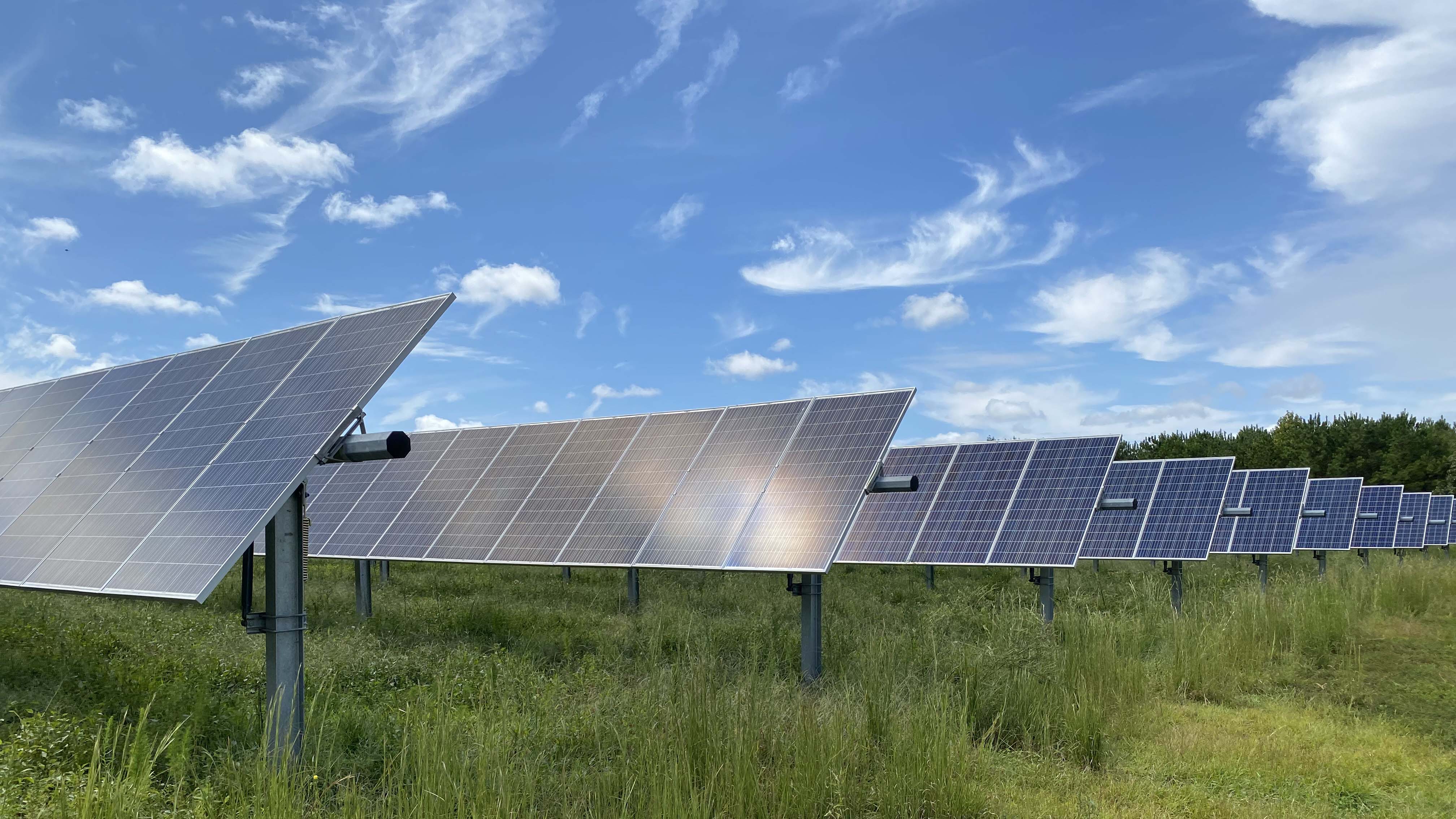
Hampton Roads officials are discussing how to address energy demand that’s expected to surge in the coming decades — because they say doing nothing is not an option.
“We will not keep a status quo if we get no new energy in our region,” Hampton City Manager Mary Bunting said at a recent meeting of the Hampton Roads Planning District Commission.
“We will actually fall even further behind. And so it's not a growth or no growth thing, the way that some people posit energy strategy. It's about maintaining our quality of life and also our ability to grow.”
The ongoing discussions have grown out of a regional analysis completed a couple years ago called the Hampton Roads Long-Term Energy Roadmap.
It outlines challenges the region will likely face accommodating energy demand — particularly for natural gas — even while the electricity supply is boosted by new projects like Dominion Energy’s offshore wind farm.
The challenges locally align with national concerns about surging demand driven by several factors.
A big one is data centers, which use massive amounts of electricity to accommodate artificial intelligence computing needs. Northern Virginia alone needs the equivalent of several large nuclear plants to serve all its planned data centers, the Washington Post reported this month.
To cut carbon pollution that fuels climate change, the country is also in the midst of transitioning things like cars and appliances off of fossil fuels and onto the electric grid.
Under new "clean cars” standards that recently took effect, for example, all new cars sold in Virginia will have to be electric by 2035.
The economic development-focused Hampton Roads Alliance is now pushing local officials to plan ahead for rising demand – and make the region a leader on renewable energy.
President and CEO Doug Smith said the group got a state grant a few years ago to hire a consultant for the regional roadmap.
The idea came after controversy surrounding the Atlantic Coast Pipeline and whether it was needed. The natural gas pipeline would have run through central Virginia but was canceled in 2020 after pushback from environmental groups and legal delays.
“We said, ‘You know what? We need our own information, our own data to really understand what the real (energy) dynamics are,’” Smith said.
PA Consulting assessed current and future energy supply and demand for about 1.7 million people in Hampton Roads, bounded by Southampton County to the west and the Eastern Shore.
“Hampton Roads faces unique economic development challenges and opportunities due to growing energy demand that has outpaced the energy supply,” the report said.
The region’s well-positioned to take advantage of the transition to clean energy, the consultant noted, including continuing to build a supply chain for the offshore wind industry and becoming a hub for “green hydrogen.”
Choosing sites and building out connections for renewable energy generation, however, “may face legal and public challenges.”

A graphic shows the mix of sources of regional electricity, current and projected.
The report says the area still needs more natural gas to support industrial and commercial operations that local officials hope to attract.
Dominion has been making a similar pitch to state regulators. In its long-term integrated resource plan last year, which drew criticism from environmental groups, the utility proposed adding several new natural gas facilities to accommodate growing demand while it also builds out solar and wind infrastructure.
A regulator recommended rejecting the plan because of its inclusion of new natural gas plants.
Gov. Glenn Youngkin has endorsed an “all of the above” approach to energy, outlined in the Virginia Energy Plan.
Matt Smith, director of energy and water technology at the Hampton Roads Alliance, said “in order to address our energy needs, you have to, if you're going to be reasonable about it,” take that approach.
That means using different types of energy for certain applications, he said — including natural gas for industrial operations that are harder to electrify.
“You’re always going to need a portfolio of different energy sources to power your economy.”
The roadmap document notes that though there is significant interstate natural gas infrastructure in Virginia, Hampton Roads is located downstream of some of the key points, limiting additional volume flowing into the region.
Federal regulators recently approved the Virginia Reliability Project, which will double the size of an existing pipeline that runs through Suffolk and Chesapeake. Doug Smith said that will help but not by enough.
Currently, an overwhelming majority of the region’s electricity — 91% — comes from nuclear power, from the 50-year-old Surry Power Station run by Dominion. That’s compared to about 20% nationwide.
The energy roadmap predicts that by 2030, that share will drop to less than half, with offshore wind energy accounting for 36% of the region’s energy supply.
By 2040, offshore wind is expected to cover 52% of the region’s electricity, followed by 34% from nuclear and 8% from solar.
The percentage of natural gas remains flat at 5% between now and 2040, with a small increase in the interim, according to the analysis.
Doug Smith said local officials – including city staff, planning commissions and city councils — have a key role to play in addressing how and when energy infrastructure is built.
“Do we want to put a battery storage facility here? Do we want to put a solar farm here? Are we comfortable with the concept of a small nuclear reactor here?” he said. “All of those decisions, while they are really important to the region, they're going to get impacted by just local land use decisions.”





